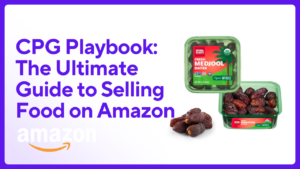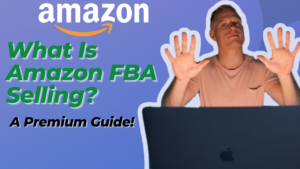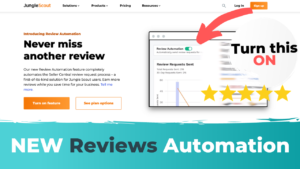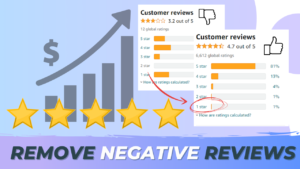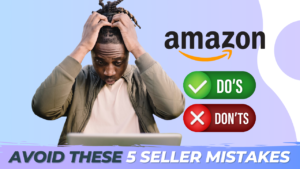As of Q4 2020, Amazon has changed the rules for sending follow-up messages/emails to customers. Basically as per Amazon Marketing Company, they are much more strict now with what you can say.
It makes sense from Amazon’s point of view – they just don’t want their users to be spammed with tons of seller emails. They basically want sellers to contact customers ONLY if it is absolutely needed! So in short, you gotta keep it short and sweet.
What is this? Amazon calls it Buyer-Seller ‘Messaging’, but it goes to the customer’s email inbox. They will not see your email address, but they can hit reply to start a thread. You need to reply to all emails/messages within 24 hours. You can do this either inside Seller Central in the Messages section or by replying to the email that goes to your account email address.
OK, let’s get into what you can and cannot do.
You CAN still send messages/emails for these reasons:
- Resolving an issue with order fulfillment
- Requesting additional information required to complete the order
- Asking a return-related question
- Sending an invoice
- Requesting product review and/or seller feedback
- Scheduling the delivery of a heavy or bulky item
- Scheduling a Home Services appointment
- Verifying a custom design
- Any other reason where the contact is required for the buyer to receive their purchase.
- Messages must be sent within 30 days of order completion.
Notice it says you still CAN ask for a review. But only ONCE, and it must not be only ‘if they liked it’ or in exchange for something.
You CANNOT sent emails/message for these reasons:
- Order or shipping confirmations (See indirect communication below)
- Messages that say only “Thank you” or that you are here to help if buyers have any problems
- Translation: no more ‘thanks for your order, this is Riley the CEO here if you need anything…’ emails!
- Marketing or promotional messaging, including coupons
- Language that either incentivizes or persuades the buyer to submit positive product reviews or seller feedback, including by offering compensation, money, gift cards, free or discounted products, refunds, rebates or reimbursements, or future-benefits
- Language that requests removal or an update of an existing product review
- Language that requests a product review only if they have had a positive experience with the product
- Translation: you can’t say ‘if you enjoy the product consider leaving a review’.
- A repeat request (per order) for a product review or seller feedback
- Translation: you can only ask for a review ONCE!
Messages also must NOT include any of these things:
- External links unless they are secure working links (https, not http) necessary for order completion or links to Amazon
- Attachments except for product instructions, warranty information, or invoices
- Logos, if they contain or display a link to your website
- Link to opt-out of messaging
- Sensitive content in images or text (e.g. bare skin, violence/gore, adult/offensive language)
- Tracking pixels or images
- Email addresses or telephone numbers
- Images of purchased products as Amazon includes those on your behalf
- Images that do not relate to your brand or company
There are tighter guidelines when it comes to formatting too:
- Accessibility issues as specified in the Web Content Accessibility Guidelines from the Web Accessibility
Initiative - Emojis
- GIFs
- Message margins over 20% max width
- Image or graphic sizes larger than 80% max width
- Overrides of Amazon’s default line height, font family, or font color
- Fonts in more than three sizes
- Message bodies that are centered or that otherwise override default text alignment settings
- More than two line-breaks (spacing between paragraphs) in a row
- Unsecure images (http instead of https)
- Spelling errors or grammar issues
Ok, that’s pretty much all the details from Amazon’s original announcement.
Strategy & Best Practices
Basically, we just gotta keep it simple now. This is how I set up my email drip:
- Day 1: I included the instructions in text format.
- You can also optionally attach it as a PDF
- You can ask for Seller Feedback in this email if you want. This is recommended if you have a new seller account.
- Something like: ‘Dear Amazon customer, here are the instructions for your order: ____. Riley Bennett, Founder, Amazing Marketing Co.’
- Optional: ‘PS. Did everything arrive OK? Kindly leave Seller Feedback to let us know how your order experience went – it is much appreciated.’
- Day 25: a simple review ask.
- Something like: ‘It’s been a few weeks since your order, so I kindly wanted to invite you to leave a product review on Amazon – it is very important to us. Thank you!’
- Tip: you can hyperlink to http://amazon.com/ryp to take the customer to the Review Your Purchases page (they permit links to Amazon). This comes in handy if you sell multiple products.

For getting reviews, Amazon has now set up a new system where sellers can click a ‘Request Review’ button next to each order ID inside of SC. Luckily, Jungle Scout has recently released a tool that automates this! So watch this video on how to turn on Jungle Scout Review Automation and turn it on now!
Takeaway
The big picture here is Amazon is moving away from buyer-seller messaging to protect its shoppers from receiving too many emails. However, sellers can still sent 1 simple review request email, and attach instructions if needed.
Persononally, I don’t think its that big of a deal, because the primary purpose of these emails for most sellers was to get more reviews – and now Amazon has the new Request Review feature, which you can automate by turning on Jungle Scout Review Automation.
Wondering how to get your first 10 reviews for your new listing? Read this article: Amazon Launch: How I Get My First 10 Reviews FAST (2020 Updated)
What are your tips? Feel free to share in the comments.
Riley Bennett



